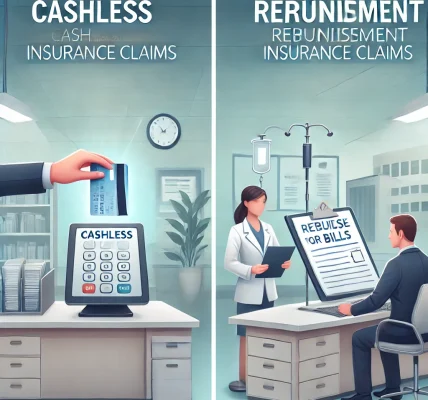Introduction
Insurance is an essential financial tool that provides protection against unforeseen risks. One of the most significant benefits of maintaining an insurance policy without making a claim is the No-Claim Bonus (NCB). This bonus is a reward given by insurance companies to policyholders who do not file any claims during the policy period. It serves as an incentive for responsible driving and prudent risk management.
In this article, we will delve into the concept of NCB, its advantages, how it affects future claims, and other critical aspects that policyholders should know.
What is No-Claim Bonus (NCB)?
NCB is a discount offered on the premium of an insurance policy, usually applicable to motor insurance and health insurance. It is a reward system where the insurer provides a reduction in the premium cost if the insured does not make any claims during the policy term.
NCB is accumulated over consecutive claim-free years, increasing the discount percentage year after year, subject to a predefined limit set by the insurance company.
How NCB Works
- First Year of No Claims: A policyholder becomes eligible for a discount after completing one claim-free year.
- Subsequent Years: The discount increases with each consecutive claim-free year, up to a maximum cap.
- Maximum Limit: Generally, the NCB can go up to 50% of the insurance premium.
- Claim Reset: If a claim is made, the NCB resets to zero or a lower percentage based on the insurer’s policy.
NCB Structure in Motor Insurance
The percentage of NCB offered varies from one insurer to another, but a common structure followed by most insurers is:
| No. of Claim-Free Years | Discount on Renewal Premium |
|---|---|
| 1 Year | 20% |
| 2 Years | 25% |
| 3 Years | 35% |
| 4 Years | 45% |
| 5+ Years | 50% |
Benefits of No-Claim Bonus
1. Lower Premiums
The most obvious advantage of NCB is the reduction in insurance premiums. This translates into cost savings for policyholders over time.
2. Encourages Safe and Responsible Driving
Since NCB is only applicable if no claims are made, policyholders are encouraged to drive carefully and avoid unnecessary claims.
3. Transferable Benefit
NCB is linked to the policyholder and not the vehicle. This means it can be transferred when purchasing a new vehicle or switching insurers, ensuring that policyholders retain their benefits.
4. Long-Term Savings
If a policyholder maintains a claim-free record for multiple years, they can enjoy up to 50% savings on their renewal premium, significantly reducing their insurance costs.
5. Applicable on Policy Renewal
NCB can be carried forward if the policy is renewed within the grace period, making it a valuable long-term financial benefit.
Impact of NCB on Future Claims
While NCB helps reduce premium costs, it also affects the decision-making process regarding claims. Here’s how:
1. Minor Damages and Repairs
Many policyholders prefer to bear the cost of minor damages themselves rather than making a claim, as a single claim could nullify years of accumulated NCB.
2. Major Accidents and Significant Losses
For large-scale damages where repair costs are substantially high, policyholders may choose to forgo NCB benefits and file a claim, as the repair expenses may outweigh the discount.
3. NCB Protection Add-On
To mitigate the loss of NCB due to unavoidable claims, insurers offer an NCB Protection Add-On, which allows policyholders to retain their NCB even after making a limited number of claims.
Common Misconceptions About NCB
1. NCB is Linked to the Car, Not the Owner – False
NCB belongs to the policyholder and can be transferred to a new vehicle or insurer.
2. NCB is Lost if the Policy Expires – Partially True
NCB can be retained if the policy is renewed within a grace period, usually 90 days from expiry.
3. NCB Cannot be Transferred to Another Insurer – False
Policyholders can transfer their accumulated NCB when switching to another insurance provider.
Legal and Regulatory Aspects of NCB
Insurance companies must adhere to Insurance Regulatory and Development Authority of India (IRDAI) guidelines regarding NCB. Some key points include:
- Disclosure of NCB Details: Insurers must clearly state the NCB percentage in policy documents.
- Fraudulent Claims: Falsely claiming NCB without eligibility can lead to penalties and policy termination.
- Transfer Rules: IRDAI allows NCB transfer from one insurer to another, provided valid proof is furnished.
Tips to Maximize NCB Benefits
- Avoid Small Claims – If possible, bear minor repair costs yourself to preserve your NCB.
- Opt for NCB Protection Cover – This add-on ensures you retain your NCB even after a limited number of claims.
- Renew Your Policy on Time – Delays in renewal can lead to loss of accumulated NCB.
- Drive Safely – Maintaining a good driving record reduces the chances of claims and helps retain NCB.
- Compare Policies – When switching insurers, check for NCB transfer policies to ensure maximum benefits.
Conclusion
The No-Claim Bonus (NCB) is a crucial aspect of insurance policies that offers financial benefits and promotes responsible behavior. Understanding how NCB works, its impact on future claims, and ways to maximize its benefits can help policyholders make informed decisions about their insurance coverage.




